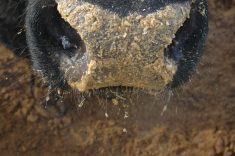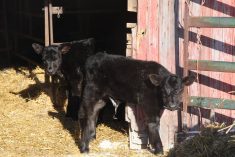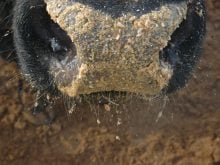Expected progeny differences come with a wide range of numbers, while indexes simplify many factors into one number
Every breed has its own indexes, and they work in similar ways. The important ones in the Canadian Hereford Association, for instance, are the Maternal Productivity Index (MPI) and the Feedlot Merit Index (FMI).
The MPI for the Canadian Hereford Association, which was created in 2000 by Agriculture Canada, was designed to combine genetic factors that affect the productivity and profitability of Hereford cows in a herd that retains its own replacements and markets calves at weaning.
Sean McGrath, a rancher and cattle management consultant at Vermilion, Alta., helped revise the MPI a few years ago because the economic and performance levels of Hereford cows had changed over the previous 15 years. He wanted it to more accurately reflect true maternal profitability and relevant traits.
Read Also

House ag committee to undertake several studies
The House of Commons standing agriculture committee has set its agenda for the coming months. Members began the fall sitting with a two-hour update on international trade
The MPI accounts for production (income) and costs (cow maintenance and replacement rate), focusing on profitability in a cow herd that retains replacement females and markets calves at weaning.
“Indexes simplify many things into one number. Part of the problem with EPDs (expected progeny differences) is that there’s been so much work in developing them that there are a lot of numbers,” McGrath says. With so many EPDs to consider, it can be overwhelming to use them for genetic selection or to decide which bull to buy.
“If you buy bulls to create replacement females, the MPI simplifies selection. It looks at things like calving ease, longevity, growth performance, how much calf you’ll have at weaning to sell, along with performance of the cow herd,” says McGrath.
“The index includes all the things that go into low cost, long-lived, productive females. It simplifies putting together all the information you’d need to figure out which cows will be good ones.”
Too much emphasis on any one trait or facet of production will affect other parts of the profit equation. The index puts all important factors into balance. The MPI handles the biological and profit relationships for traits that impact ranch profitability.
“The FMI does the same thing but it’s simpler because it’s a terminal index; all offspring go to the feedlot. It looks at calving ease, growth rate, carcass merit like yield and marbling. It looks at all the things you are getting paid for, but also all the things that cost you money,” says McGrath.
He has worked with several breeds on index values.
“Some of the math and evaluations have improved, but the way they work is still the same; indexes are helpful when selecting bulls to sire good daughters, or bulls to sire good feedlot calves. Choose an index (that) represents what you are trying to do. If you sell all calves at weaning, you won’t use an MPI or any other cow index. You’d use a terminal index or a dollars-weaning index.”
Though breed associations may use different selection tools, many are similar across breeds.
“They use the same EPD tools in the background to build those indexes, and they all have options,” McGrath says.
“I might pick an Angus bull or a Ford vehicle, but the model I choose may vary depending on my purposes. Am I running cows on range conditions or keeping all my calves on a mixed farm and putting them in a feedlot?”
Even maternal traits will vary with each environment and whether the cows must be efficient hustlers in rough terrain or have feed in front of them all the time.
“Some of this is just a function of where you live and your land base. If you have cultivated acres, your feed situation will be different than if you are running cattle just on native grass,” he says.
“A maternal index might point you in a general direction and balance those tradeoffs, but you still need to use common sense. You might be considering two bulls that both score 130 on whatever index you are looking at, or in the top five percent for that index, but one might have a milk EPD of 30 and the other a milk EPD of 15. One bull might be better for you than the other, depending on your situation and cow herd,” says McGrath.
“Or you may want a terminal sire, looking at two bulls with the same index score. If you want to use the bull on heifers as well as cows, you break the tie with calving ease.
“Once you pick the index that fits, you can use it to balance a lot of tradeoffs that you can’t cover in your own mind.”
McGrath says indexes are generally reliable but still require common sense based on the operation.
“Another thing that’s useful about an index is that it can expose you to cattle you might otherwise overlook. You might have a rule about not using any bull that has a calving ease EPD below eight. But there may be a bull with a fantastic index that might move you farther ahead in your program, and his calving ease is 7.9. If you just focus on calving ease, you might be giving up rib-eye, marbling, growth, etc. just because you have that arbitrary rule.”
Producers need to assess bulls and not rely completely on EPDs or an index. Bulls must always be structurally sound and able to breed cows.
“But these tools help sort through many things,” notes McGrath. “Out of a list of 100,000 bulls for sale, each with 35 different EPDs, where do you start?”
Indexes can help improve a herd.
“If you can improve your cow herd overall two percent per year, that’s huge progress. In five years, that’s a 10 percent improvement. It is not going to all come in one trait. If you have a 500 pound weaning weight, in five years you might not have a 550 lb. weaning weight. You may have 505 lb., but you may have a two percent higher calf survival rate and five percent less culling rate, and this adds up to more profit,” he says.
Even with large swings in markets or inputs or differences in management, cattle consistently maintain their relative rankings in the index. The price of calves can change dramatically, but the index stills sorts bulls in the same order.
“Weaning weight relative to milk is still the same. Fertility relative to growth is always important, regardless of the price of calves. Having one extra calf is worth more. The index can handle market fluctuation and still drive you toward your target,” McGrath says.
“It allows us to harness the science, and the science is getting better and more complicated. At the ranch level, I don’t have time to be an expert on genomics, spreadsheets and database programs. If there are people who can do this for us and create a tool, it becomes the crescent wrench of selection.”

















